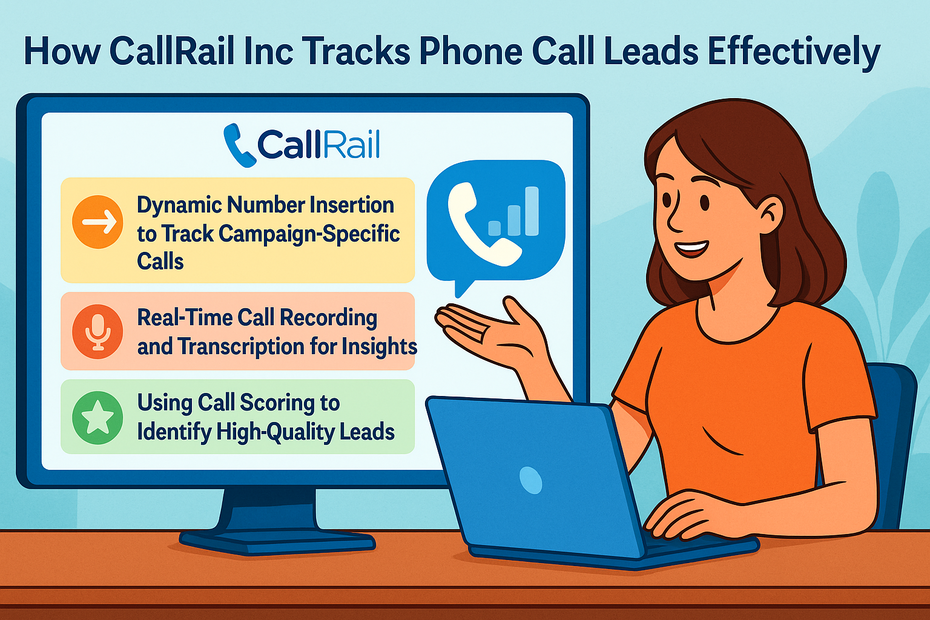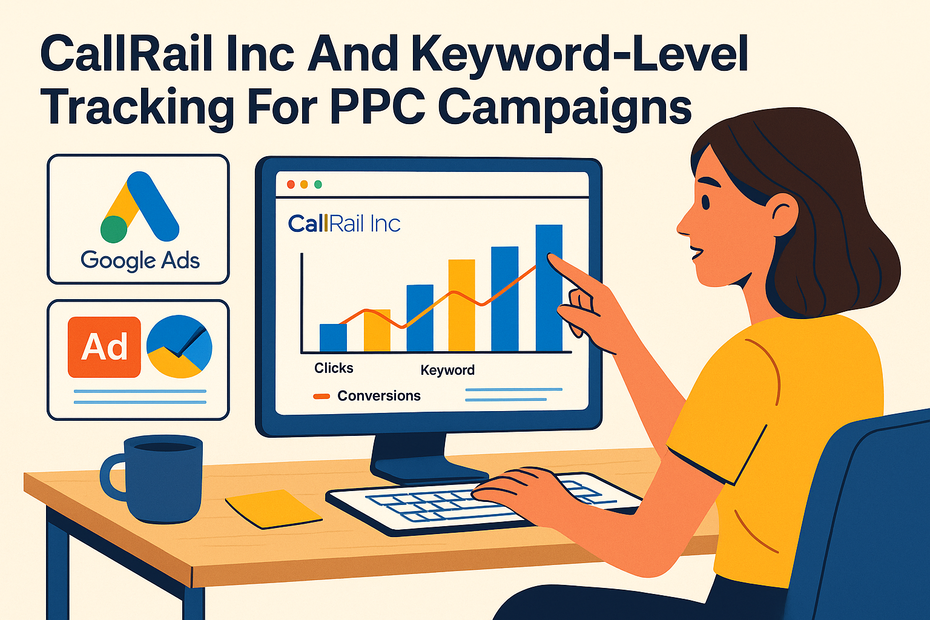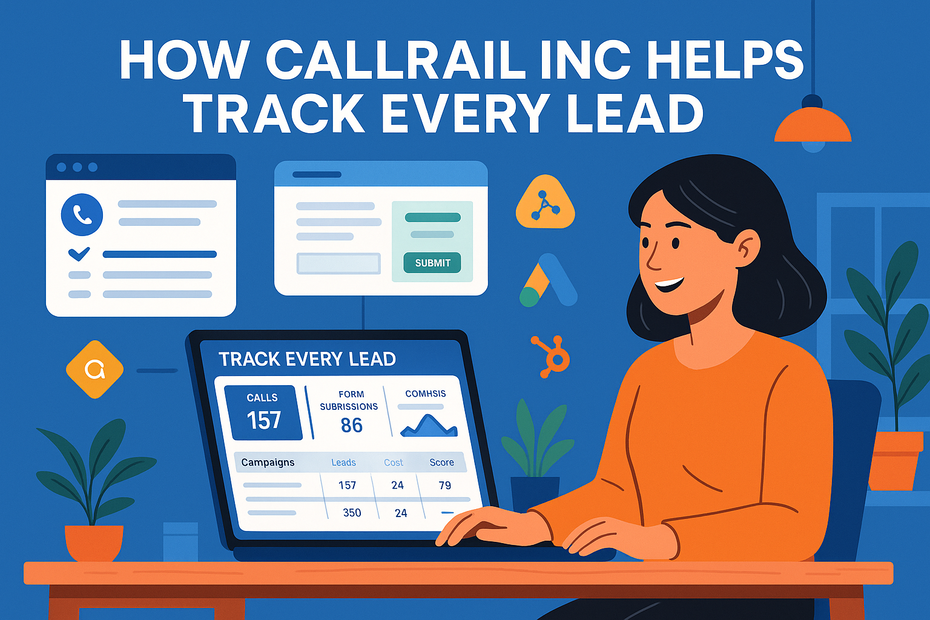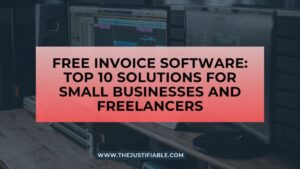Table of Contents
CallRail Inc is a powerful tool that many businesses overlook when it comes to understanding where their leads actually come from.
Are your marketing campaigns really paying off? Which ads, keywords, or phone calls are driving real customers? And more importantly, how do you track every single lead without missing hidden opportunities?
This guide breaks down how CallRail Inc helps you capture, analyze, and optimize every lead so you can stop guessing and start making data-driven decisions.
Why CallRail Inc Is Essential For Lead Tracking
When it comes to marketing, most businesses think they know which ads or campaigns bring in customers. But without a reliable tracking system, you’re often just guessing.
CallRail Inc gives you a way to connect the dots between your marketing dollars and actual leads—so instead of assumptions, you have hard proof of what’s working.
How CallRail Bridges The Gap Between Marketing And Sales
I’ve seen this firsthand: marketing teams love showing clicks, impressions, and reach, while sales teams care about closed deals. That’s where CallRail shines. It bridges the gap between the two worlds by tying phone calls, form fills, and conversations directly back to the marketing source.
Imagine you’re running a Google Ads campaign. You can see traffic coming in, but do you know which keywords are driving people to pick up the phone?
CallRail creates unique phone numbers for each campaign (and even for individual visitors) so you can say: “This customer called us after clicking our ad for HVAC repair.”
That simple connection eliminates finger-pointing. Sales can see which leads are qualified, and marketing can prove which campaigns actually drive revenue. In practice, this means more budget for channels that work and less wasted spend.
The Cost Of Missed Leads Without Call Tracking Software
Let me paint a picture. You spend $5,000 on paid ads in a month. Calls start coming in, but you don’t know which campaign generated them. Without call tracking, every call just looks like “phone inquiry.”
That lack of clarity leads to:
- Money wasted on ads that aren’t converting.
- Missed opportunities to double down on high-performing campaigns.
- Incomplete sales data that makes it harder to forecast.
One study found that 65% of businesses consider phone calls their highest-quality leads. If you’re not tracking those calls properly, you’re leaving your most valuable data on the table. It’s like running a marathon but not timing yourself—you know you ran, but you don’t know if you improved.
Why Businesses Need A Centralized Tracking System
Leads come from everywhere these days—Google Ads, Facebook campaigns, SEO, email, and even offline flyers with phone numbers. Without a central hub, trying to piece together which channel is driving which lead is a nightmare.
CallRail Inc acts as that hub. All calls, form submissions, and conversations funnel into one dashboard where you can filter by:
- Campaign source (Google Ads, Facebook, Organic Search).
- Keyword used.
- Call length and quality.
Having everything in one place means you don’t need to switch between five tools or rely on gut instinct. Instead, you get a clear, data-backed story of how your leads flow through the funnel. That’s what makes CallRail essential—it doesn’t just track leads, it makes sense of them.
How CallRail Inc Tracks Phone Call Leads Effectively

Phone calls are still one of the strongest lead sources for service-based businesses, from law firms to home services.
CallRail Inc makes sure every call is not only captured but also analyzed in detail, so you know which calls are worth celebrating and which are eating up time.
Dynamic Number Insertion To Track Campaign-Specific Calls
Here’s a simple but powerful feature: Dynamic Number Insertion (DNI). This is where CallRail swaps out your regular phone number with a unique one depending on how the visitor arrived at your site.
For example:
- Someone clicks your Google Ad → They see tracking number A.
- Someone finds you through SEO → They see tracking number B.
- Someone clicks from a Facebook ad → They see tracking number C.
All those numbers forward to your real line, but in your CallRail dashboard, you’ll know exactly which channel triggered the call. Setting it up is as easy as:
- Log in to your CallRail dashboard.
- Go to Numbers > Create Number.
- Choose “Dynamic Number Insertion” and assign it to your campaigns.
From that moment, every visitor’s journey can be tied to the exact call they make. I like this feature because it kills the guesswork—you’ll never mix up leads from PPC and organic traffic again.
Real-Time Call Recording And Transcription For Insights
Tracking calls is one thing, but listening back to them? That’s where the gold is. CallRail records every call (with disclosure, of course) and even transcribes them automatically with AI.
Here’s why that matters:
- You can review how your team handles calls and coach them on weak spots.
- You’ll spot patterns in customer language that reveal buying intent.
- Marketing can see if the “leads” are actually qualified or just spam.
I’ve worked with a client who thought their ad campaign was failing. After looking at CallRail transcripts, we realized half their calls were spam bots. The campaign wasn’t the problem—it was call filtering. Without those transcripts, they might’ve shut down a profitable campaign.
Using Call Scoring To Identify High-Quality Leads
Not all calls are equal. Some are quick price-checkers, others are ready-to-buy customers. That’s why CallRail’s call scoring is so useful. You can rate calls manually or use automation to flag high-quality leads based on keywords spoken during the call.
For instance, if someone says, “I’d like to schedule a consultation,” CallRail can automatically tag that as a hot lead. You can then filter your reports to show only those calls and calculate true ROI.
This is also where sales and marketing alignment gets easier. Instead of arguing over what counts as a “good lead,” you’ve got a scoring system that defines it. In practice, this saves hours of back-and-forth and helps prioritize follow-ups on calls that actually matter.
Tracking Online Form Submissions With CallRail Inc
Form submissions often look straightforward—someone fills out their name, email, and question. But if you don’t know where that form came from, you’re missing the bigger picture.
CallRail Inc takes form tracking to the next level by automatically connecting those submissions back to the source, giving you a clear view of which marketing campaigns are driving the right leads.
How CallRail Captures Leads From Web Forms Automatically
One of the most useful things I’ve found about CallRail is how simple it is to set up form tracking. Instead of juggling different scripts or worrying about missing leads, you can add CallRail’s form capture to your website and instantly see submissions in the dashboard.
Here’s how it works in practice:
- In your CallRail dashboard, go to Forms > Create Form.
- Add the tracking snippet to your site (or through your tag manager).
- Every form submission, whether from a landing page or a blog post, flows directly into CallRail with source details.
The real magic is attribution. You’re not just seeing “John Doe filled out a form.” You’ll know John came from a Facebook ad campaign, visited two blog posts, and then filled out your consultation form. That’s the kind of context that turns raw data into actionable insights.
I recommend using this when running multi-channel campaigns because you can instantly compare: are more forms coming from organic search or paid ads? That clarity helps decide where to put your budget.
Benefits Of Integration With CRM And Marketing Tools
Tracking forms in CallRail is great, but it gets even better when you integrate with your CRM or marketing automation platform. I’ve connected it with HubSpot before, and it feels seamless: every form submission in CallRail is pushed directly into the CRM with campaign details attached.
Why does this matter? Because your sales team doesn’t just see a lead’s contact info—they see the journey. Did this person click on a Google Ad for “emergency plumbing services”? Did they come through an SEO blog about maintenance tips? That context helps sales reps tailor their conversations.
I’ve seen teams cut lead response times in half with this setup because the lead data is richer, and follow-up feels more personalized. Plus, integrating with tools like Mailchimp or ActiveCampaign means you can drop form submissions into automated email sequences instantly.
Customizing Form Tracking To Match Unique Campaign Goals
Not every form is created equal. A newsletter sign-up has a very different value than a “Book a Demo” form. CallRail gives you flexibility to customize your tracking so you can measure the forms that matter most to your business goals.
For example, you can assign values to different forms inside the dashboard:
- Newsletter sign-up = Low priority lead.
- Free consultation = High priority lead.
- Contact us = Mid priority lead.
When you pull up reports, you’ll see the breakdown of form types alongside calls, so you’re not mixing apples and oranges. I suggest tagging forms by campaign type as well—like “PPC – Demo Form” or “SEO – Blog Signup.” This helps when you’re comparing which marketing channels bring in higher-value submissions.
In practice, this can guide your decisions. If you notice 80% of high-value forms are coming from LinkedIn ads, while Google Ads drives mostly low-value newsletter sign-ups, you’ll know exactly where to focus. That’s the kind of insight CallRail makes easy.
CallRail Inc’s Multi-Touch Attribution Model Explained
One of the trickiest parts of marketing is figuring out which touchpoint deserves credit for a lead. Was it the Google Ad, the blog post, the email, or the last phone call?
CallRail Inc answers this with multi-touch attribution, giving you a full picture of the customer journey instead of only crediting the last click.
Why Multi-Touch Attribution Matters For Lead Tracking
If you’re only looking at last-click attribution, you’re probably making skewed decisions. Let’s say a lead first found you through a Facebook ad, came back through organic search, and then finally clicked on a Google Ad before calling. Should Google Ads get 100% of the credit? Not really.
Multi-touch attribution spreads credit across all those interactions so you can see which channels work together. From my experience, this stops businesses from over-investing in the “closer” and ignoring the “introducer.” Think of it like a relay race—every runner matters, not just the one who crosses the finish line.
CallRail’s attribution models allow you to choose whether you want equal weighting (every touchpoint gets credit) or a custom setup (like giving 40% to the first touch, 40% to the last touch, and 20% to the middle). This flexibility makes the data fit your actual sales cycle.
How CallRail Connects Every Customer Touchpoint
CallRail tracks every interaction: phone calls, form fills, chat messages, and even website visits. All of this data is tied together using tracking numbers and cookies, so by the time someone becomes a lead, you can trace their entire path.
For example:
- Visit 1: Organic search → Blog post.
- Visit 2: Retargeting ad → Service page.
- Visit 3: Google Ads → Phone call.
From the dashboard, you can open the Timeline View for a specific lead and literally see this path unfold. I like showing this to clients because it instantly explains why multi-channel marketing works—you can visualize how ads, content, and follow-ups all contribute.
Using Attribution Data To Refine Marketing Spend
This is where the real payoff comes in. Attribution data helps you spend smarter instead of spreading budget thin across too many channels.
Here’s an example:
- Facebook Ads might rarely close deals directly, but attribution reports show they drive 40% of “first touches.” That means they’re a key awareness driver, and cutting them would shrink your funnel.
- On the other hand, display ads might show up in 30% of journeys but never as a last touch. That might tell you to trim spend there.
Inside CallRail, you can filter attribution reports by channel, campaign, or even keyword to see what’s consistently part of winning journeys.
I suggest pulling these reports monthly and asking: “What’s driving quality leads versus just traffic?” Over time, you’ll notice patterns that can save thousands in wasted budget.
CallRail Inc And Keyword-Level Tracking For PPC Campaigns

Pay-per-click campaigns live and die on keywords. The problem is, most platforms will show you clicks, impressions, and spend—but not whether those keywords actually led to paying customers.
CallRail Inc solves this gap by tracking keyword-level performance down to the phone call, so you know exactly which search terms are bringing in profit instead of empty clicks.
How Keyword Tracking Reveals The Most Profitable Search Terms
When you connect CallRail to your Google Ads account, every call generated by your ad is tied back to the specific keyword that triggered it. This isn’t just about “someone clicked my ad”—it’s about “someone searched for ‘emergency HVAC repair near me,’ clicked my ad, and called within two minutes.”
Here’s the setup path I usually recommend:
- From your CallRail dashboard, go to Settings > Integrations > Google Ads.
- Enable keyword-level tracking.
- Assign dynamic tracking numbers to your PPC campaigns.
Now, when a call comes in, you’ll see the actual keyword responsible. This matters because not every keyword converts equally.
I’ve seen situations where “cheap plumbing services” generated lots of clicks but almost no high-quality calls, while “licensed plumber near me” drove fewer clicks but almost all of them turned into real jobs.
This level of clarity changes the way you think about PPC—suddenly, you’re not just chasing traffic; you’re chasing ROI.
Linking Ad Spend To Real Conversions Instead Of Clicks
Clicks are nice, but they don’t pay the bills. Calls and closed deals do. That’s where CallRail’s keyword attribution becomes a game-changer.
By connecting phone calls to ad spend, you can calculate true cost per lead instead of cost per click. For instance:
- Keyword A: $500 ad spend, 50 clicks, 0 calls = $500 wasted.
- Keyword B: $300 ad spend, 20 clicks, 6 calls = $50 per lead.
From inside CallRail’s reporting dashboard, you can filter by keyword and see not just the volume but the quality of calls tied to that spend. This lets you shut down underperforming keywords faster and double down on the ones that actually bring in business.
I advise reviewing these reports weekly if you’re spending heavily on PPC. A quick glance often reveals obvious winners and losers, and even trimming just 10–20% of wasted spend can free up thousands for the channels that actually convert.
Reducing Wasted Budget Through Smarter Keyword Insights
Here’s where I get practical. Once you’ve identified which keywords drive quality calls, you can:
- Pause keywords that generate clicks but no calls.
- Adjust bids to give more budget to high-converting keywords.
- Add negative keywords (terms that waste money, like “DIY” or “free”).
I once helped a local attorney cut his PPC budget by 25% simply by analyzing CallRail keyword data. He discovered half his spend was going to keywords like “free legal advice,” which brought in tons of calls—but from people who would never become clients.
With CallRail data, he blocked those terms and reallocated budget to “personal injury lawyer near me,” which produced fewer calls but nearly all paid retainers.
That’s the kind of clarity that turns PPC from a guessing game into a predictable growth channel.
Conversation Intelligence Features That Improve Lead Quality
Tracking calls is great, but understanding what happens on those calls is even better. CallRail Inc’s conversation intelligence features—powered by AI—let you dig into call content, spot trends, and improve both marketing and sales outcomes.
AI-Powered Call Transcription For Better Data Accuracy
Instead of listening to hours of call recordings, CallRail automatically transcribes conversations so you can quickly scan what was said. This saves time, but it also makes your data more searchable.
From your dashboard, you can click on a call and instantly see the transcription, with key terms highlighted. I suggest setting up keyword spotting for phrases like:
- “Schedule an appointment”
- “How much does it cost?”
- “I’m ready to move forward”
When those phrases appear, you know the caller was showing buying intent. I’ve found this especially useful for marketing teams who want proof their campaigns are driving real opportunities.
Spotting Buyer Intent Through Conversation Analysis
Beyond transcription, CallRail’s AI can score calls automatically based on detected intent. For example, a caller asking for directions might get tagged as low quality, while a caller asking about service pricing is flagged as high intent.
This means you don’t just see call volume—you see call value. One client I worked with discovered that 60% of their calls from Facebook ads were low-value (people asking about business hours), while Google Ads calls were mostly high-value (ready to purchase). That insight completely reshaped their ad spend.
You can also filter reports by “qualified calls only,” which removes noise and gives you a clean view of marketing ROI.
Training Sales Teams With Insights From Real Conversations
This is one of the most underrated uses of CallRail. The recordings and transcripts aren’t just for marketing—they’re gold for training sales and customer service teams.
Here’s how I’ve used it with teams:
- Select 3–5 successful calls where a rep closed the deal.
- Select 3–5 calls where the lead dropped off.
- Compare tone, language, and responses.
Patterns emerge quickly. Maybe successful reps asked open-ended questions, while weaker reps jumped straight to pricing. By using real conversations as training material, you’re grounding coaching in reality, not theory.
I believe this is where CallRail’s value multiplies: it doesn’t just track leads—it helps you improve the way you handle them, which in turn raises close rates.
Integrating CallRail Inc With Your Existing Tech Stack
Lead tracking is powerful, but it becomes unstoppable when connected with the tools you already use. CallRail Inc makes integration surprisingly painless, whether you’re working with CRMs, ad platforms, or workflow automation tools.
Seamless Connections With CRMs Like HubSpot And Salesforce
I always recommend connecting CallRail with your CRM because it creates a full feedback loop. Every call or form submission flows directly into the CRM, along with campaign attribution data.
In HubSpot, for example, a new call can automatically create a contact, log the call, and tag it with the keyword or ad campaign that drove it. Salesforce users can even map custom fields, so you know exactly which campaign to credit for revenue when deals close.
This means sales teams stop asking “Where did this lead come from?”—the answer is already in the system.
How To Sync CallRail Data With Google Ads And Analytics
If you’re investing in paid ads, syncing CallRail with Google Ads and Analytics is non-negotiable. This allows you to send actual call conversions back into Google, so the algorithm knows which clicks led to real business outcomes.
Here’s the quick path:
- From CallRail, go to Settings > Integrations > Google Ads.
- Enable “Import Call Conversions.”
- Map your call events to specific conversion actions in Google.
Now, Google Ads can optimize toward calls instead of clicks. I’ve seen this single integration cut cost per conversion by 20–30% because Google starts prioritizing ads that lead to phone calls, not just traffic.
Building Custom Workflows With Zapier And Other Integrations
For businesses with more unique setups, Zapier is your best friend. CallRail integrates natively with Zapier, which means you can build custom workflows without touching code.
Some practical automations I’ve set up:
- Send a Slack notification to the sales team when a high-value call comes in.
- Add call details to a Google Sheet for weekly team reporting.
- Trigger an email sequence in ActiveCampaign when a form submission is logged.
This flexibility is huge because no two businesses track leads in exactly the same way. I suggest starting with one or two simple automations, then layering on complexity as you see results.
Reporting And Analytics Tools That Drive Smarter Decisions
The real power of CallRail Inc isn’t just collecting data—it’s making that data easy to understand and act on.
The reporting and analytics tools pull everything together so you can stop guessing and start making clear, evidence-backed decisions.
Custom Dashboards To Track Leads Across All Channels
One of the things I really like about CallRail is how flexible the dashboards are. You’re not stuck with cookie-cutter reports—you can build custom dashboards that highlight what matters most to you.
For example, if you’re a local service business, you might want to see:
- Total calls this week.
- Percentage of calls from Google Ads vs. organic search.
- Conversion rates from forms vs. calls.
Setting this up is simple: go to Analytics > Create Dashboard, then add widgets for the metrics you care about. I suggest naming dashboards by role (e.g., “Executive Overview” vs. “Marketing Deep Dive”). That way, leadership sees high-level data, while marketers can dig into the weeds.
Having this all in one place means you’re not flipping between Google Ads, Analytics, and your CRM—it’s all stitched together inside CallRail.
How To Use Reports To Compare Campaign Performance
Campaign comparisons are where CallRail reports really shine. Instead of looking at ad platforms in isolation, you can see calls, forms, and leads side by side.
For instance, in the Acquisition Report, you can filter by channel and instantly see which campaigns drive more qualified leads.
I once ran this report for a client and discovered that their expensive Facebook campaign generated lots of clicks but less than 5% of high-quality calls—while a modest SEO campaign was generating 60% of their leads. That’s the kind of insight that changes budget conversations fast.
If you’re running multiple campaigns, I recommend pulling a Weekly or Monthly Report to compare:
- Cost per lead.
- Lead quality scores.
- Call duration averages (longer calls usually mean stronger intent).
This lets you see not just which campaigns bring volume, but which bring value.
Turning Analytics Into Actionable Marketing Strategies
Data without action is just noise. The real trick with CallRail is using the insights to make smarter moves.
Some practical ways I’ve done this:
- If reports show SEO leads stay on the phone longer, double down on content targeting those queries.
- If PPC reports show short, unqualified calls, refine your keyword list or ad copy.
- If form tracking shows most demo requests come from LinkedIn, consider testing higher spend there.
I believe the best strategy is to treat reports as a feedback loop. Don’t just pull them at the end of the quarter—review weekly, spot patterns, and adjust campaigns as you go. Small tweaks based on fresh data almost always outperform big, infrequent overhauls.
CallRail Inc’s Mobile App For Tracking Leads On The Go
Business doesn’t stop when you step out of the office, and neither do leads. CallRail’s mobile app makes sure you can keep tabs on calls, forms, and campaign performance wherever you are.
Real-Time Notifications Of New Leads Wherever You Are
The push notifications are one of my favorite features. Every time a new call or form comes in, you get a real-time alert. For small teams, this is a lifesaver—you can respond to hot leads faster instead of waiting until you’re back at your desk.
You can also set custom alerts so only high-value calls ping you. For example, you might choose to only get notified when a call lasts longer than 60 seconds (a good sign it’s a real lead). This way, you’re not overwhelmed by spam or wrong numbers.
Managing Call Data And Reports From A Mobile Dashboard
Inside the app, you can see the same reports you’d normally pull on desktop. That means if you’re traveling or in the field, you can still check campaign performance with just a few taps.
The layout is simple: open the app, tap Analytics, and you’ll see your dashboards in mobile view. Calls can also be filtered by source, duration, or tag. I suggest setting up “Saved Filters” ahead of time on desktop—they carry over to mobile and save you from digging through menus on the go.
This makes it easy to answer questions quickly. Imagine being in a team meeting and someone asks, “How many calls came from the new Google Ads campaign last week?” You can literally pull it up in seconds.
Keeping Sales And Marketing Teams In Sync Remotely
The app isn’t just for managers. I recommend having your sales reps use it too. That way, they can:
- Listen to call recordings immediately after a missed call.
- See which campaigns are generating the leads they’re receiving.
- Stay aligned with marketing, even if they’re out in the field.
For remote teams, this sync is crucial. Everyone stays on the same page, no matter where they’re working from. It keeps lead response times sharp and ensures marketing and sales stay aligned instead of siloed.
Pro Tips To Get The Most Out Of CallRail Inc
CallRail Inc is packed with features, but I’ve found that the way you set it up makes all the difference. Here are some practical pro tips I’ve learned to squeeze maximum clarity and efficiency out of it.
Setting Up Tracking Numbers Strategically For Maximum Clarity
Don’t just create tracking numbers randomly—plan them with intention. I recommend naming them based on campaign or channel, like “PPC_Google_HVAC_June” or “SEO_ServicePage.” This keeps your dashboard organized and makes reports easier to read.
A common mistake I see is reusing the same number for multiple campaigns. Avoid this—it muddies your data. Instead, create unique numbers for every distinct channel or ad group you want to measure.
Regularly Auditing Campaign Data To Avoid Tracking Gaps
Just like any system, tracking can slip over time. Maybe a new landing page doesn’t have the form tracking script, or someone swapped out a phone number on a flyer. I suggest doing a quick monthly audit:
- Call each tracking number yourself to confirm routing.
- Submit a test form to check attribution.
- Review dashboards for any “unattributed” leads.
Catching small gaps early saves you from weeks of missing data. I’ve been burned by this before—it’s not fun realizing a whole campaign went untracked because a snippet wasn’t installed.
Leveraging Advanced Features Without Overcomplicating Setup
CallRail has some powerful extras like keyword spotting, AI call scoring, and advanced attribution models. My advice: start simple, then layer these on as you grow.
For example, don’t try to set up five attribution models on day one. Begin with a first-touch vs. last-touch comparison, then expand into multi-touch once you’re comfortable.
The same goes for AI call scoring—let it run in the background for a few weeks before you start adjusting based on the data. That way, you’ve got enough sample size to trust the insights.
Pro tip: Think of CallRail as your “lead clarity engine.” If a feature makes your data easier to understand, use it. If it complicates things without a clear benefit, put it aside until you’re ready.






